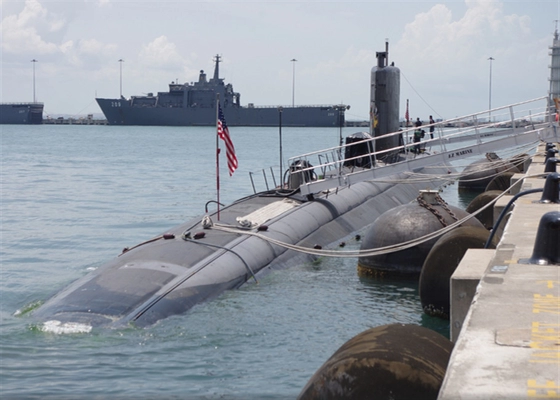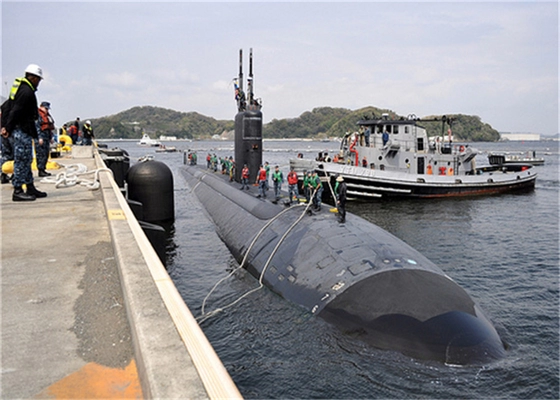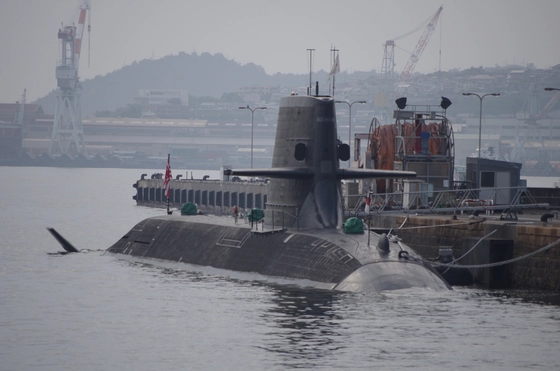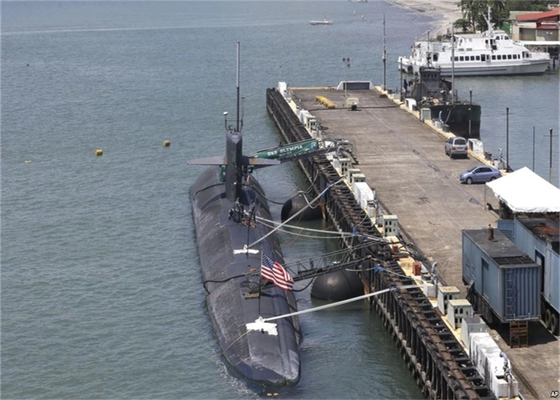Hydro pneumatic fender internal structure, principle of operation and method of use
29/07/2024Marine Safety Innovations – foam filled fender
02/08/2024Hydro Pnuematic Fender Four Features: Sub-surface contact face, Variable draft, Very low hull pressures, Prevents acoustic tile damage
A Hydro yokohama Pneumatic Fender is a crucial component in marine environments, designed to provide optimal energy absorption and protection for vessels during docking and mooring operations. Key features include a sub-surface contact face, variable draft capability, very low hull pressures, and prevention of acoustic tile damage.
Sub-surface Contact Face
A Hydro Pneumatic Fender with a sub-surface contact face is designed to provide optimal energy absorption and protection for vessels. This feature is particularly important in marine environments where vessels of varying sizes and drafts need to dock or moor safely. The sub-surface contact face ensures that the fender remains effective even when the vessel's hull is partially submerged, which is a common scenario in tidal waters or when dealing with vessels that have deep drafts.
The sub-surface contact face works by providing a larger surface area for the vessel to press against, distributing the impact forces more evenly. This reduces the risk of damage to both the vessel and the dock. Traditional fenders that only provide surface-level contact can fail to protect the submerged parts of the hull, leading to potential damage and increased maintenance costs.
The sub-surface contact face is designed to adapt to the varying water levels, ensuring consistent performance regardless of the tide. This adaptability is crucial for ports and harbors that experience significant tidal variations. By maintaining effective contact with the vessel's hull at all times, the fender ensures that the energy from the impact is absorbed efficiently, reducing the stress on the vessel's structure.
Protecting the vessel, the sub-surface contact face also helps in maintaining the integrity of the dock or quay. By distributing the forces more evenly, it prevents localized stress points that can lead to structural damage over time. This not only extends the lifespan of the docking infrastructure but also reduces the need for frequent repairs and maintenance.
The materials used in the construction of the sub-surface contact face are typically highly durable and resistant to marine conditions. This includes resistance to saltwater corrosion, UV degradation, and biofouling. These properties ensure that the fender remains effective and reliable over long periods, even in harsh marine environments.
The sub-surface contact face of a Hydro Pneumatic Fender is a critical feature that enhances the safety and efficiency of docking operations. By providing effective protection for both the vessel and the dock, it ensures smooth and safe mooring, reduces maintenance costs, and extends the lifespan of marine infrastructure.

Adapting to Variable Drafts
The variable draft feature of a Hydro Pneumatic Fender is designed to accommodate vessels of different sizes and drafts, ensuring optimal performance in a wide range of marine conditions. This adaptability is crucial for ports and harbors that handle a diverse fleet of vessels, from small boats to large ships.
The variable draft capability allows the fender to adjust its position based on the water level and the vessel's draft. This ensures that the fender remains effective in absorbing impact forces, regardless of the vessel's size or the tidal conditions. Traditional fenders that lack this adaptability can fail to provide adequate protection, especially for vessels with deep drafts or in areas with significant tidal variations.
One of the key benefits of the variable draft feature is its ability to provide consistent performance in different water depths. This is particularly important in tidal waters, where the water level can change significantly throughout the day. By adjusting its draft, the fender ensures that it maintains effective contact with the vessel's hull at all times, providing reliable protection and energy absorption.
The variable draft feature also enhances the versatility of the fender, making it suitable for a wide range of applications. Whether it's a small marina or a busy commercial port, the fender can adapt to the specific requirements of the environment, providing optimal protection for all types of vessels. This versatility reduces the need for multiple types of fenders, simplifying the docking infrastructure and reducing costs.
The variable draft feature also contributes to the overall safety of docking operations. By ensuring that the fender remains effective in different water depths, it reduces the risk of damage to the vessel and the dock. This is particularly important in busy ports, where the risk of collisions and impacts is higher.
The materials used in the construction of the variable draft mechanism are typically highly durable and resistant to marine conditions. This includes resistance to saltwater corrosion, UV degradation, and biofouling. These properties ensure that the fender remains effective and reliable over long periods, even in harsh marine environments.
The variable draft feature of a Hydro Pneumatic Fender is a critical component that enhances its adaptability and versatility. By providing consistent performance in different water depths and accommodating vessels of varying sizes and drafts, it ensures optimal protection and energy absorption, reducing the risk of damage and enhancing the safety of docking operations.
Ensuring Very Low Hull Pressures
The very low hull pressures feature of a Hydro Pneumatic Fender is designed to minimize the stress and impact forces exerted on a vessel's hull during docking and mooring operations. This is a crucial aspect of fender design, as excessive hull pressures can lead to structural damage, increased maintenance costs, and reduced vessel lifespan.
One of the primary benefits of very low hull pressures is the enhanced protection it provides to the vessel. By distributing the impact forces more evenly across a larger surface area, the fender reduces the localized stress points that can cause damage to the hull. This is particularly important for vessels with sensitive or fragile hull structures, such as those made from composite materials or those with specialized coatings.
The very low hull pressures feature is achieved through the use of advanced materials and design techniques. The fender is typically constructed from highly resilient and flexible materials that can absorb and dissipate energy effectively. This includes the use of rubber compounds, foam-filled structures, and other materials that provide a cushioning effect, reducing the impact forces on the hull.
Protecting the vessel, very low hull pressures also contribute to the safety and integrity of the docking infrastructure. By reducing the forces exerted on the dock or quay, the fender helps to prevent structural damage and extend the lifespan of the docking facilities. This is particularly important in busy ports and harbors, where the docking infrastructure is subjected to frequent and heavy use.
The very low hull pressures feature also enhances the overall efficiency of docking operations. By minimizing the risk of damage to the vessel and the dock, it reduces the need for repairs and maintenance, leading to cost savings and improved operational efficiency. This is particularly important for commercial ports, where downtime and maintenance costs can have a significant impact on profitability.
The very low hull pressures feature is designed to provide consistent performance in a wide range of marine conditions. Whether it's a calm marina or a busy commercial port, the fender can effectively absorb and dissipate impact forces, providing reliable protection for the vessel and the dock. This versatility makes it suitable for a wide range of applications, from small recreational boats to large commercial ships.
The very low hull pressures feature of a Hydro Pneumatic Fender is a critical component that enhances the safety, efficiency, and reliability of docking operations. By minimizing the stress and impact forces on the vessel's hull, it provides enhanced protection, reduces maintenance costs, and extends the lifespan of both the vessel and the docking infrastructure.

Preventing Acoustic Tile Damage
The feature of preventing acoustic tile damage in a Hydro Pneumatic Fender is particularly important for vessels equipped with sensitive acoustic tiles, such as submarines and research vessels. Acoustic tiles are used to reduce the noise signature of a vessel, making it less detectable by sonar and other underwater detection systems. These tiles are often delicate and can be easily damaged by impact forces during docking and mooring operations.
One of the primary benefits of this feature is the enhanced protection it provides to the vessel's acoustic tiles. By minimizing the impact forces and distributing them more evenly, the fender reduces the risk of damage to these sensitive components. This is particularly important for military submarines, where the integrity of the acoustic tiles is crucial for stealth and operational effectiveness.
The prevention of acoustic tile damage is achieved through the use of advanced materials and design techniques. The fender is typically constructed from highly resilient and flexible materials that can absorb and dissipate energy effectively. This includes the use of rubber compounds, foam-filled structures, and other materials that provide a cushioning effect, reducing the impact forces on the acoustic tiles.
Protecting the acoustic tiles, this feature also contributes to the overall safety and integrity of the vessel. By reducing the risk of damage to the tiles, it helps to maintain the vessel's noise reduction capabilities, ensuring that it remains effective in its operational environment. This is particularly important for research vessels, where the accuracy of acoustic measurements can be affected by damaged tiles.
The prevention of acoustic tile damage also enhances the overall efficiency of docking operations. By minimizing the risk of damage to the vessel, it reduces the need for repairs and maintenance, leading to cost savings and improved operational efficiency. This is particularly important for military and research vessels, where downtime and maintenance costs can have a significant impact on operational readiness and mission success.
The feature of preventing acoustic tile damage is designed to provide consistent performance in a wide range of marine conditions. Whether it's a calm marina or a busy commercial port, the fender can effectively absorb and dissipate impact forces, providing reliable protection for the vessel's acoustic tiles. This versatility makes it suitable for a wide range of applications, from military submarines to research vessels.
The feature of preventing acoustic tile damage in a Hydro Pneumatic Fender is a critical component that enhances the safety, efficiency, and reliability of docking operations. By minimizing the impact forces on the vessel's acoustic tiles, it provides enhanced protection, reduces maintenance costs, and ensures that the vessel remains effective in its operational environment.
Article images are from https://www.pneumaticrubberfenders.com/
if you want to know buy this produce, come here
More video



